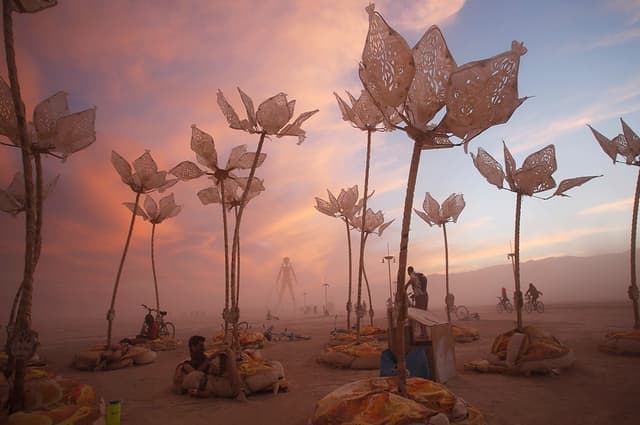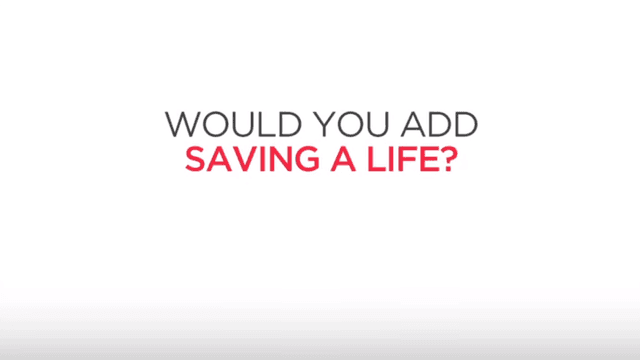Trillium Gift of Life Network: ‘bucket list’
- Exhibited by
- Annie Moreton, Strategy Director, GOOD Agency
- Added
- June 30, 2016
- Medium of Communication
- Social Media, Online
- Target Audience
- Individuals, Young people
- Type of Charity
- Public Health
- Country of Origin
- Canada
- Date of first appearance
- January, 2014
SOFII’s view
There's lots of inspiration in this case study, particularly in how to stretch a tight budget and creative use of digital. It's not a fundraising campaign but it is a clever solution to awareness of a public health problem.
Summary / objectives
To encourage signing up to the organ donor register among young people (who have the lowest rate of participation)
Background
Trillium Gift of Life Network (TGLN) is Ontario's government-run organ donor programme. They had a problem, with thousands of patients on the waiting list and getting more and more ill by the day, they needed a campaign that would spur donations on a tiny budget . Donations from a group with the lowest levels of participation – young people.
Millennials are not formally defined but includes young people born between 1982 to 2004 (i.e. people aged 13 - 35 years) who are shaped by technology and social networks in a way preceding generations were not. These young people want new stuff, cool stuff, adventure, risk and are always looking for unique life-enriching experiences such as the Burning Man festival in Nevada. So how could TGLN make saving a life and signing up to the organ donor register one of these experiences?
The idea was simple. TGLN should ‘own’ the millennial term ‘bucket list’. This made the dictionary in 2012 and was defined as ‘a list of things that one has not done before but wants to do before dying. It’s being hashtagged every second of every day by young people – over a million times in a year.
Street researchers filmed themselves asking one hundred young people ‘what's on your bucket list?’ and received answers such as learn a language, go into space, swim with whales and go skydiving. And then they added a second surprising question ‘would you add saving a life?’ and all one hundred said yes. These vox pops formed the low cost basis of the campaign.
TGLN created a list of over 500 most common bucket list activities and bought those Google search terms for the province of Ontario. Anyone searching for 'swimming with dolphins', 'Burning Man' or 'climbing Mount Everest' then saw a simple sponsored ad that would take them to TGLN's website, where they could see a short video about saving a life and sign up for organ donor registration in less than two minutes.
To amplify the campaign further they used social media to take advantage of the number of times people were using #bucketlist. A community moderator responded to every person in Ontario who used #bucketlist and started a personal conversation about whether they would add saving a life to the list with a direct link to the organ donor page.
Results
With a budget of just $18,000 CAD, in three weeks TGLN reached 600,000 young Ontarians with 1,677 online registrations. And since one organ donor can save up to eight different people’s lives then potentially 13,416 lives could be saved in the future.
Merits
This is a clever use of behavioural science and intelligent targeting.
Other relevant information
This case study was originally presented at an IWITOT session of the Institute of Fundraising’s special interest group on legacies in January 2016. And these are some of the learning points that might be applied:
- Start where your audience are: baby boomers in the UK are characterised by two distinct groups, those born during the post war rebuilding Europe period of austerity, 1945-1952, and those born into the post war economic boom period 1953-1964.
- Don’t make assumptions: A recent study by JWT London has shattered stereotypes of people in their 50s and 60s. Whether it is starting a business, travelling the world, or looking for love, the ‘elastic generation’ have consistently demonstrated their trailblazing behaviour and youthful attitudes unlike any generation before them. They are as keen as millennials for experiences but they have far more disposable income.
- Be channel savy: the Good Agency’s own research has found that 91 per cent of baby boomers use one or more social media site. About 17 per cent of the group we surveyed spend 11+ hours per week on Facebook.
- Don’t interrupt, join in: a quick search of Facebook will reveal ‘50 for 50’ or ‘60 for 60’ or whatever flavour of bucket list suits them. TGLN appropriately joined conversations by asking ‘would you add saving a life to your #bucketlist?’
- Ask ‘why not?’ not ‘why?’: TGLN had to think creatively in order to maximise their tiny budget.
- Offer short-term gratification: the sign-up process for organ donation takes only two minutes.
- Appropriate emotional impact: most millennials had never thought about saving someone’s life but they had a unanimously positive response.
- Enabling action: one click took people to the sign-up point.
 View original image
View original image
























